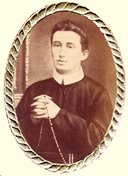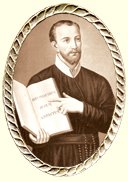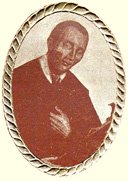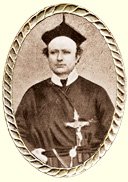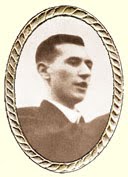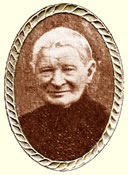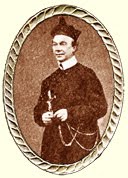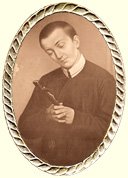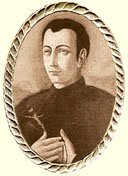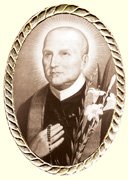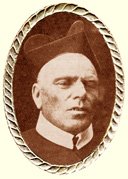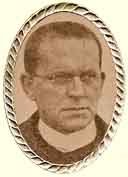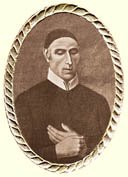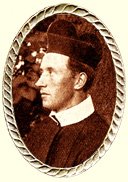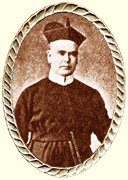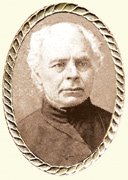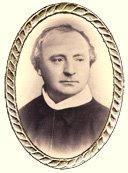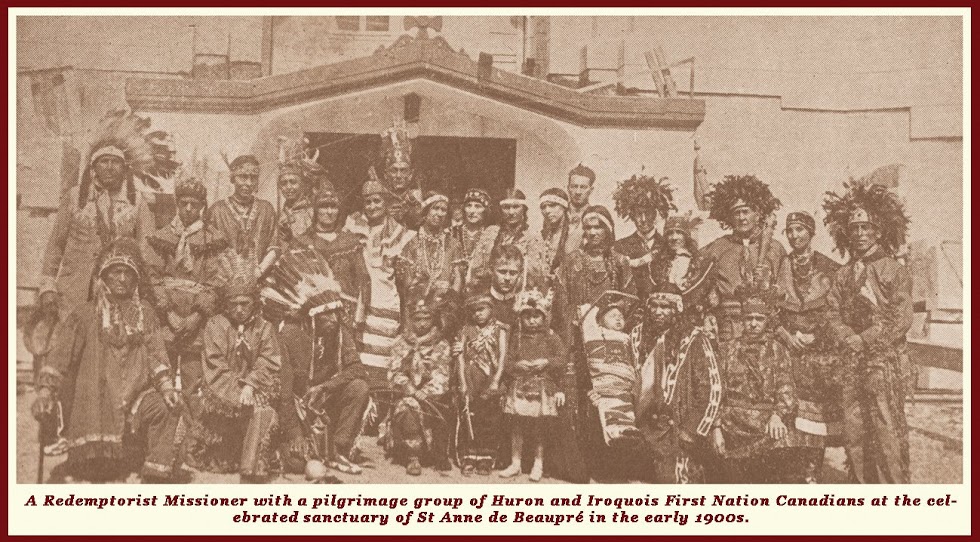Rev Fr William Plunkett, C.SS.R. (1824-1900)
 Father Plunkett was the first Irish-man who joined the Congregation of the Most Holy Redeemer. He was born at Corbalton, Co. Meath, on 6th of June, 1824, and was the third son of Arthur James Plunkett, 9th Earl of Fingall.
Father Plunkett was the first Irish-man who joined the Congregation of the Most Holy Redeemer. He was born at Corbalton, Co. Meath, on 6th of June, 1824, and was the third son of Arthur James Plunkett, 9th Earl of Fingall.He chose the army as a profession, and served some years as an officer in the Welsh Fusilers, going with his regiment to the West Indies, and later to Canada. It is told of him that while Lieutenant he encouraged the Catholic men of the regiment by word and by example to frequent the Sacraments. During the six years he spent as a soldier, his life was such as one would expect in a religious rather than in a young officer in the army, for his is known to have been very pious and to have been in the habit of practising acts of bodily penance.
On returning from Canada, in order to make his salvation more secure, he made up his mind to enter a religious order. He went to the Redemptorist Monastery of St. Mary’s, Clapham, to spend some days in retreat and to settle his vocation. As a result he entered the Novitiate of the Congregation at St. Trond, Belgium, and having gone through his noviceship with great fervour, made the Religious Vows on 15th October, 1851. His studies in preparation for the priesthood were made on the Continent, but he returned to Clapham, London, to be ordained priest. This was in the June of 1854. A year or more was still spent in study and then began a long life of missionary work.
For forty-five years he laboured for the salvation of souls, giving his first mission in Manchester, and ever working on with quiet, constant zeal until death came and found him still a missioner, at the age of seventy-seven, in distant Australia.
In the course of his long years of Redemptorist life he was many times attached to various communities. He first came to Limerick in the year 1857, and in the May of the following year was present at the laying of the foundation stone of the church. On the death of Very Rev. Father Roes, who was Rector at that time, Father Plunkett became Vice-Rector. Two years later he was appointed Rector for three years. Soon after this appointment the new Church of St. Alphonsus was solemnly dedicated on Sunday, December 7th, 1862, by the Coadjutor-Bishop of Limerick, the Most Rev. Dr. Butler, the Dedication sermon being preached by the Bishop of Kerry, Most Rev. Dr. Moriarty.
In 1868 Father Plunkett was made Rector of Clapham. It has been written of him that while he was Rector of Clapham house, he showed, in a very striking way, his great affability, kindness, generosity, and above all his devotion to the poor. During the years that followed he was twice attached to Bishop Eton, and twice to Clapham, of which house he was again Rector for a few years. He was also twice a member of the Limerick Community, from which he was transferred to Perth, Scotland, in 1887. This date brings us close to the time of his departure for Australia, for having then being sixty-four years of age, generously offered himself for that far distant mission, he was appointed to take part in the new foundation at Ballarat, in Victoria, and set sail with the Rev. Father Cleary as his companion on the 28th September, 1888.
Five years later he was named Visitor, or representative of the Very Rev. Father Provincial, in Australia. Then he was for a year and a half Rector of Waratah, when that came which was to be his last appointment: he was made Superior of the new foundation at Perth in Western Australia. This was towards the end of the year immediately preceding his death.
 He had been asked by his Eminence Cardinal Moran to prepare some papers for the Australian Catholic Congress, which was to take place in September, 1900. This he did with pleasure, and when the time for the Congress and the Dedication Ceremony of St. Mary’s Cathedral approached, he started for Sydney in company with Rev. Father Clune, travelling by steamer. But while crossing the Australian Bight, which is generally rough, the dear old man, after going through his devotions in his cabin, was coming up the saloon stairs to sit on deck when the steamer lurched, and he fell back violently on the leaden floor. He was unable to rise until help came. A young doctor on board attended him with the greatest care and kindness and he was soon well enough to say his Office and the Rosary.
He had been asked by his Eminence Cardinal Moran to prepare some papers for the Australian Catholic Congress, which was to take place in September, 1900. This he did with pleasure, and when the time for the Congress and the Dedication Ceremony of St. Mary’s Cathedral approached, he started for Sydney in company with Rev. Father Clune, travelling by steamer. But while crossing the Australian Bight, which is generally rough, the dear old man, after going through his devotions in his cabin, was coming up the saloon stairs to sit on deck when the steamer lurched, and he fell back violently on the leaden floor. He was unable to rise until help came. A young doctor on board attended him with the greatest care and kindness and he was soon well enough to say his Office and the Rosary.From Adelaide he travelled by train to Sydney. As a precaution he was taken to St. Vincent’s Hospital. Here, very soon his state became critical. He asked for the last Sacraments, and was anointed by Very Rev. Father O’Farrell; Fathers Cleary and Clune also assisted at his bedside. His death was that of a saint; it was as his life had been.
It will be difficult to convey in a short space the impression that one receives of the saintliness of this truly holy priest from the accounts of those who had known and lived with him, some of them for upwards of forty years. Father Plunkett was remarkable especially for his brotherly charity, both as a Superior and a confrere, being always most affable, genial, cheerful and entertaining. He was ever ready to oblige and be of service, and as a result was much beloved by everyone. He was always humble, gentle, and obedient as a child. It used to be remarked that he was extremely courteous in his manner towards the poor.
It was natural that, at his obsequies which were attended by his Eminence Cardinal Moran, twelve bishops and over two hundred priests, that the Cardinal in his beautiful panegyric should have remarked, that it seemed as if Providence had specially arranged that one who had humbled himself in life, and had quitted rank and fortune, and bright worldly prospects for the humble and laborious life of a follower of St. Alphonsus, should thus come to be so singularly exalted by such obsequies as no ecclesiastic in Australia had ever had.
And his Eminence added that it was a great satisfaction for him to learn that he whose mortal remains had received such honour that day was the first Irishman who had followed the standard of St. Alphonsus and joined the Congregation of the Most Holy Redeemer.
 His remains were reverently carried to the burial ground of the Community of Mount St. Alphonsus, Waratah. There was a time when he hoped that his body should lie in the crypt of the Church of Mount St. Alphonsus, Limerick, not because he had devoted the greater part of his patrimony to the building of the house and church, but because it would, he thought, have more efficaciously secured to him the prayers of a people for whom he had a great esteem, and amongst whom he spent many years. †
His remains were reverently carried to the burial ground of the Community of Mount St. Alphonsus, Waratah. There was a time when he hoped that his body should lie in the crypt of the Church of Mount St. Alphonsus, Limerick, not because he had devoted the greater part of his patrimony to the building of the house and church, but because it would, he thought, have more efficaciously secured to him the prayers of a people for whom he had a great esteem, and amongst whom he spent many years. † 



















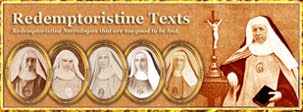
.jpg)









